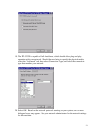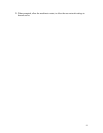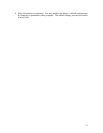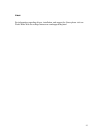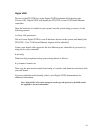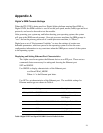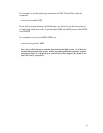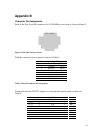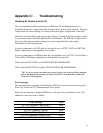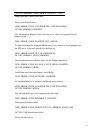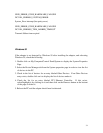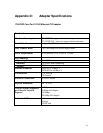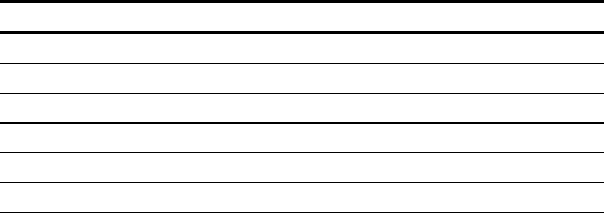
32
Appendix C: Troubleshooting
Windows NT Version 4.0 and 3.51
The most common problem encountered on Windows NT for Ethernet devices is a
mismatch of the port’s speed and media settings to those in use on the network. The most
simple check of correct cabling is to observe the status lights on the handle of the card.
Once the card is installed in the system, the software is installed, and the module is wired
to your network hub, the LINK light should be illuminated. If LINK fails to light, check
that your cable type and media settings are correct. Appendix B provides cable
information for all configurations.
If you are connected to a FAST hub, be sure card is set to AUTO
1
, FAST or FAST Full
Duplex, depending on the capability of your hub.
If you are connected to a 10Mb/sec hub, the card should be set to AUTO
1
, Twisted Pair or
Twisted Pair Full Duplex, depending on the capability of your hub.
Cables from the ITI-5232E to a hub MUST NOT BE CROSSOVER.
Cables from the ITI-5232E to another ITI-5232E MUST BE CROSSOVER.
1
TIP: If you are certain your cable type is correct, but you are not seeing LINK, setting the
port to match the hub port exactly (ex. FAST, not AUTO). Some hubs have trouble with
cards set to AUTO negotiate.
Error messages
The error messages are logged in the Windows NT Error Log and can be seen using the
Error Log Viewer (in NT's Administration Tools group).
Each error message has a standard NDIS error code and a driver's additional code. The
additional codes are listed in Table 8.
Error Message Code
DC21X4_ERRMSG_REGISTRY 0x01
DC21X4_ERRMSG_ALLOC_MEMORY 0x02
DC21X4_ERRMSG_SROM 0x03
DC21X4_ERRMSG_MEDIA 0x04
DC21X4_ERRMSG_LOAD_CAM 0x05
DC21X4_ERRMSG_SYSTEM_ERROR 0x06



